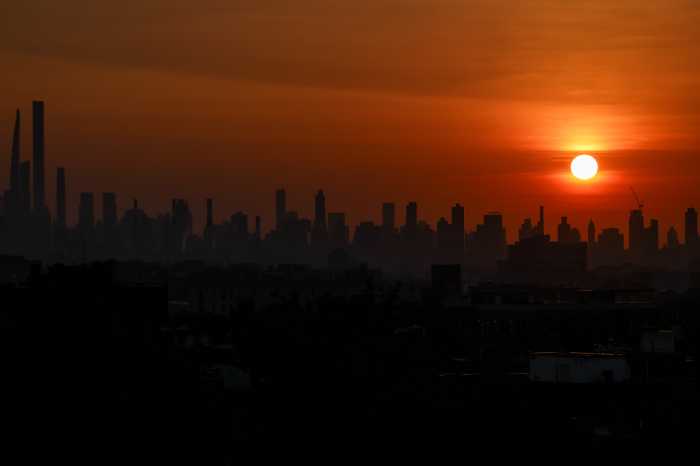
BY TERESE LOEB KREUZER | When Mary Miss designed Battery Park City’s South Cove in the early 1980’s, the Hudson River waterfront was not accessible to most people.
“It’s hard to think of this now,” Miss said recently, “but South Cove was one of the first green spots that we had along the river. Up to that time, we were living on an island here in New York City but you really couldn’t approach the river.”
Miss conceived of South Cove as a place where people could smell the river, hear it, get their feet wet and actually go out on the water. She created a tower shaped like the head of the Statue of Liberty and equipped it with a bench as a lookout point. A bowed bridge leads away from the land to a concave deck that arches over the river. Deliberately placed pilings suggest the piers that once lined the Hudson River waterfront before cruise ships were replaced by airplanes and commercial shipping migrated to other parts of the harbor.
However, one important element of Miss’ design, a ramp on the northern periphery of South Cove that descends from the level of the esplanade to the water, has proven to be an expensive headache.
“Because of the wave action and the natural current of the Hudson, the South Cove quay collects large pieces of debris that continually become trapped underneath,” Battery Park City Authority President Gayle Horwitz explained at a recent B.P.C.A. board of directors meeting.
The Hudson’s fierce tides and currents have necessitated replacing the deck every five years at a cost of approximately $70,000. Another $8,000 a year has been spent repairing and retightening damaged deck boards. In addition, the stainless steel screws that support the deck have deteriorated because of frequent removal and reinstallation.
Rather than continuing to make piecemeal repairs, the B.P.C.A. has decided to replace the ramp completely. At a cost of just under $500,000, the Authority has engaged the firm of Simpson and Brown to do the job, which will take around seven weeks to finish. Work will begin in the fall.
Water levels in the Hudson have risen since South Cove was completed in 1987, said Horwitz. Now the quay needs to be raised above the mean high water level in order to protect it from further damage. In addition, a new electrical system will be installed.
“We have numerous lighting problems including outages and that creates public safety issues,” Horwitz said. “We have many phone calls from the community about lights being out in that area.”
Miss is philosophical about the changes. She said that she deliberately placed the ramp low so that “people could be close to the water and get a sense of the river — not just have that distant view that you have when you’re on the rest of the esplanade — but that very thing I had wanted as a positive thing has turned out to be just a nuisance for maintenance.”
Miss does not think that the alterations will significantly compromise what she had in mind. South Cove was the work of three people. Taking off from Miss’ vision, landscape architect Susan Child chose the plantings and Stanton Eckstut, the principal planner and designer of Battery Park City’s esplanade, integrated it with the rest of the Battery Park City waterfront. But Miss was the primary force behind the work, which took three years to build.
She said that it was of great importance in her career because of its scale. “I started doing projects in New York in the late sixties and this was my first opportunity to do one on a permanent scale,” she said. “South Cove was a chance to work in the public realm and actually do something that can affect the lives of New Yorkers. As I went forward, you might presume that there would be multiple opportunities like that, but that was very rare. One of the things this has led me to is trying to understand how an artist can work in the public realm on a much more modest scale but still engage people.”
Miss lives in Tribeca and visits South Cove often. “The thing that been really nice for me is that I can see it being used and how it continues to be used,” she said. “And the way that it’s maintained is just exceptional. I couldn’t have hoped that any other project I’ve ever done or will do will be maintained like the South Cove.”



































